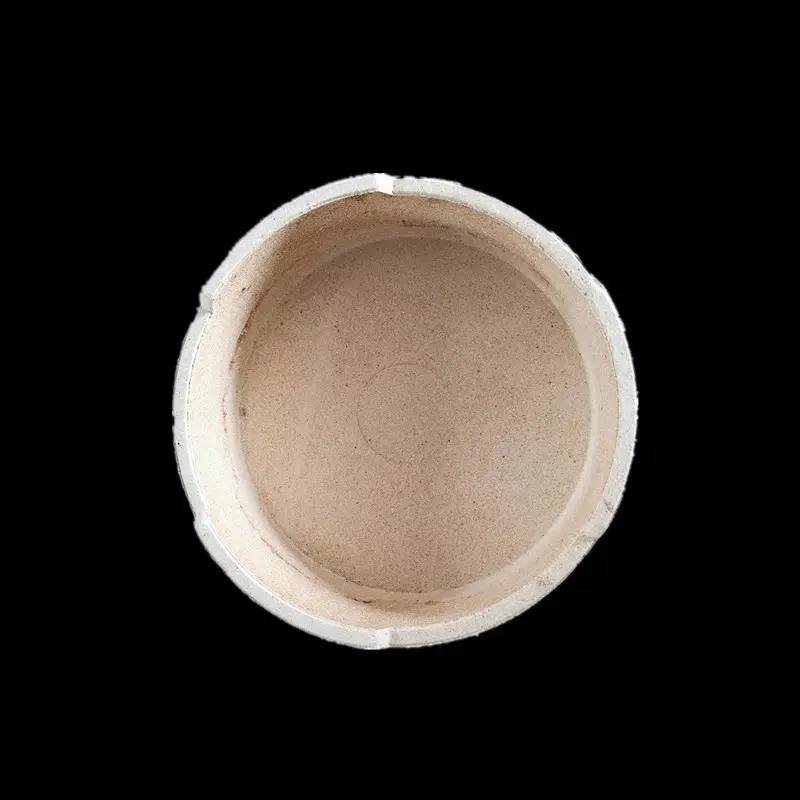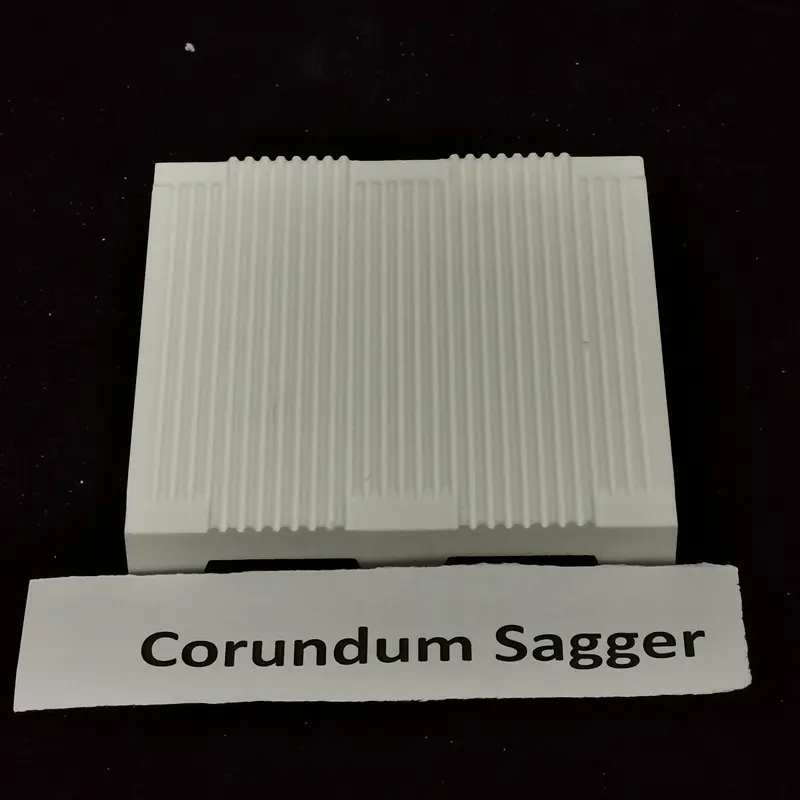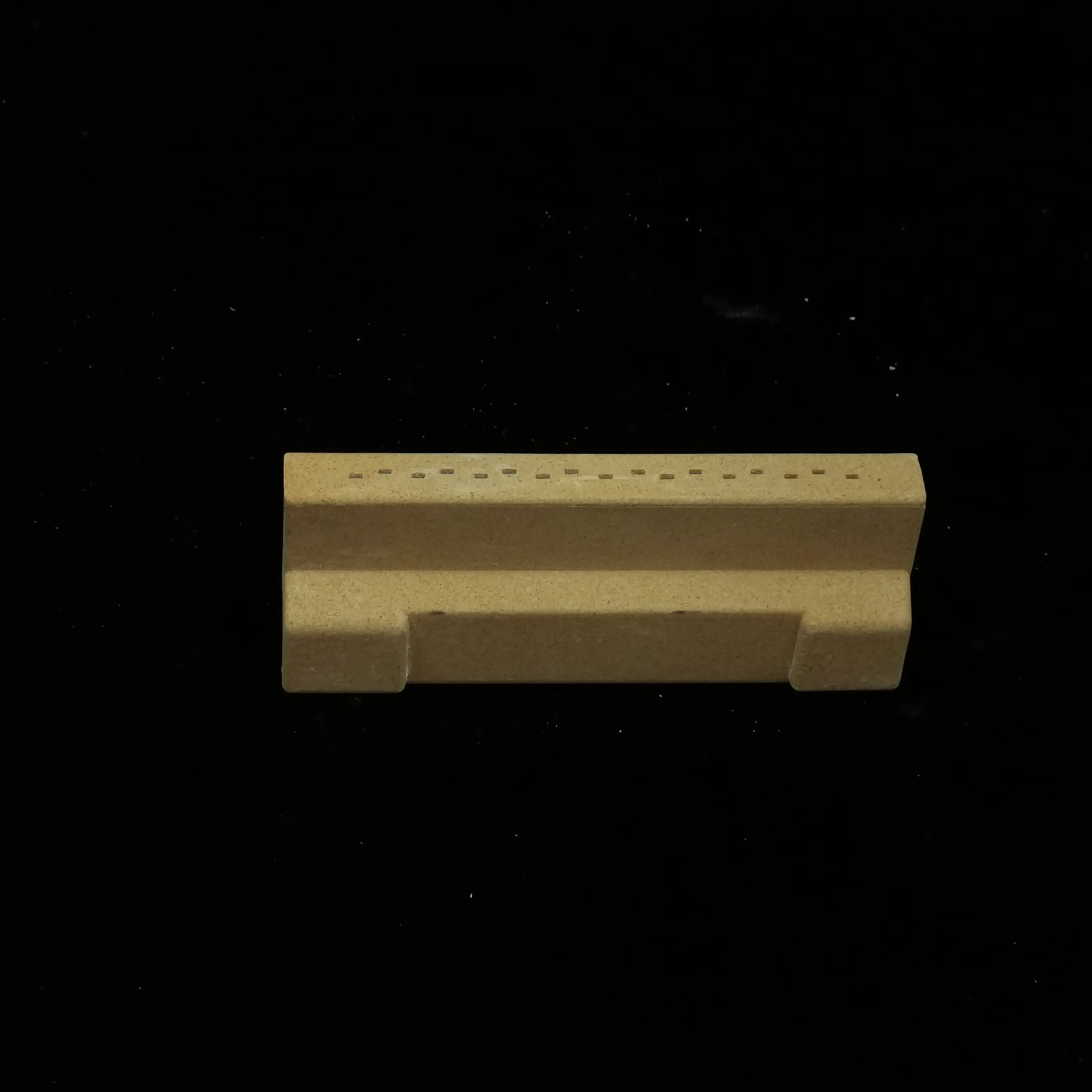High performance high strength high temperature alumina ceramic spacer
The exceptional performance of alumina spacers stems directly from the inherent properties of aluminum oxide (Al₂O₃) ceramic, particularly in its high-purity forms (typically 95%, 99.5%, or 99.8% Al₂O₃):
-
Exceptional Electrical Insulation: Alumina is an outstanding electrical insulator, even at elevated temperatures and high frequencies. Its volume resistivity is extremely high (>10^14 Ω·cm), and it boasts a high dielectric strength (typically 10-35 kV/mm), making it ideal for preventing short circuits and leakage currents in high-voltage applications.
-
Superior Thermal Properties:
-
High Thermal Conductivity: Compared to many other ceramics and plastics, alumina offers good thermal conductivity (approximately 20-35 W/mK), facilitating heat dissipation away from sensitive components.
-
Excellent Thermal Stability: Alumina retains its strength and dimensional integrity over a wide temperature range (from cryogenic levels up to 1600°C / 2912°F for short periods, continuous use typically up to ~1500-1700°C depending on purity). Its low coefficient of thermal expansion (CTE ~6-8 x 10^-6 /K) minimizes dimensional changes with temperature fluctuations.
-
-
Outstanding Mechanical Strength & Hardness: Alumina is very hard (Mohs hardness ~9, Vickers hardness ~1500-1650 HV), providing excellent resistance to wear, abrasion, and mechanical deformation. It exhibits high compressive strength, crucial for maintaining spacing under load.
-
Chemical Inertness & Corrosion Resistance: Highly resistant to strong acids, alkalis, molten metals, and corrosive gases, alumina spacers perform reliably in harsh chemical environments where metals would corrode or plastics would degrade.
-
Low Dielectric Loss: Essential for high-frequency RF and microwave applications, alumina minimizes signal loss (low tan δ).
-
High Purity & Cleanliness: Especially critical in semiconductor and vacuum applications, high-purity alumina (99.5%+) minimizes contamination risks from outgassing or particle generation.
-
Biocompatibility: High-purity alumina is biocompatible, allowing its use in specific medical device applications.
Product Features & Capabilities
Alumina ceramic spacers leverage these material properties and offer specific design advantages:
-
Precision Dimensional Tolerance: Manufactured using advanced processes like dry pressing, isostatic pressing, injection molding, or precision machining, alumina spacers can be produced to extremely tight tolerances (±0.01mm or better), ensuring consistent and reliable positioning.
-
Complex Geometries: Available in a vast array of standard shapes (cylindrical rods/tubes, rectangular blocks, washers, discs, custom profiles) and capable of being manufactured into complex bespoke designs to meet specific application requirements.
-
Superior Surface Finish: Can be produced with very smooth surface finishes (down to Ra < 0.2µm), minimizing friction, particle generation, and improving electrical contact where needed. Can also be lapped or polished to optical levels for specific uses.
-
High Load Bearing Capacity: Excellent compressive strength allows them to support significant loads without crushing or deforming.
-
Non-Magnetic & Non-Conductive: Essential in applications sensitive to magnetic fields or requiring complete electrical isolation.
-
Laser Markable: Components can be permanently marked for traceability without compromising material properties.
-
Metalization & Brazing Compatibility: Surfaces can be metallized (e.g., Mo-Mn, tungsten, gold plating) to enable hermetic sealing or brazing to metal components for complex assemblies.
-
Wide Range of Sizes: Available from tiny sub-millimeter dimensions for microelectronics to larger sizes for industrial equipment.
Diverse Applications Across Industries
The unique combination of properties makes alumina ceramic spacers vital in numerous demanding fields:
-
Electronics & Electrical Engineering:
-
PCB & Power Electronics: Isolating high-voltage components, providing creepage/clearance distances, supporting busbars, insulating heatsinks, separating power semiconductor layers (IGBTs, Thyristors) in modules.
-
RF & Microwave: Supporting striplines, microstrips, and waveguides; acting as low-loss insulators in antennas, filters, and amplifiers.
-
Vacuum Tubes & Electron Guns: Providing precise internal spacing and high-voltage insulation.
-
Sensors: Isolating sensing elements and providing thermal paths.
-
-
High-Temperature Applications:
-
Furnaces & Kilns: Supporting heating elements, insulating thermocouples, spacing furnace furniture (shelves, setters).
-
Thermal Processing: Jigs and fixtures for brazing, sintering, and heat treatment.
-
High-Temp Sensors & Instruments: Insulating components within probes and measurement devices.
-
-
Semiconductor Manufacturing:
-
Wafer Processing: Used in fixtures, boats, and carriers within CVD, PVD, diffusion, and etching equipment due to ultra-high purity and resistance to harsh process gases and plasmas.
-
Inspection Equipment: Providing precise, stable, and non-contaminating positioning.
-
-
Laser & Optoelectronics:
-
Laser Cavities: Precisely aligning and isolating optical components (mirrors, lenses, crystals) due to thermal stability and rigidity.
-
Optical Benches & Mounts: Providing stable, vibration-resistant bases.
-
-
Industrial Machinery:
-
Wear Parts: Used as wear-resistant guides, bushings, and bearings in abrasive environments.
-
Insulating Bushings & Standoffs: Isolating components in motors, generators, and high-voltage switchgear.
-
Sealing Surfaces: Used in pumps and valves where corrosion resistance and hardness are critical.
-
-
Medical Devices:
-
Implantable Devices: High-purity, biocompatible alumina used in specific spacer applications within implants.
-
Diagnostic Equipment: Insulating and spacing components in X-ray tubes, MRI equipment, and other high-tech medical devices.
-
-
Research & Scientific Instruments:
-
Vacuum Systems: Providing structural support and electrical isolation within chambers.
-
Particle Physics: Used in detectors and accelerators where radiation resistance and electrical properties are key.
-
Cryogenic Applications: Maintaining structural integrity and insulation at very low temperatures.
-
Why Choose Alumina Over Alternatives?
-
vs. Plastics/Nylons: Superior temperature resistance, hardness, creep resistance, dimensional stability, and non-outgassing. Essential for high-temp or high-load applications.
-
vs. Metals: Electrically insulating, non-magnetic, corrosion-resistant, and often lighter weight. Crucial for isolation.
-
vs. Other Ceramics (e.g., Steatite): Higher strength, hardness, thermal conductivity, and purity (especially 99.5%+ grades). Better for demanding mechanical, thermal, and ultra-clean applications.
-
vs. Zirconia: Higher thermal conductivity (better for heat sinking), lower cost, wider availability in complex shapes. Zirconia has higher fracture toughness but lower thermal conductivity.
Conclusion
Alumina ceramic spacers are far more than simple mechanical separators. They are precision-engineered components that solve complex challenges related to electrical isolation, thermal management, structural integrity, and chemical resistance in the most demanding environments. From enabling the miniaturization and power density of modern electronics to withstanding the extreme conditions of industrial furnaces and semiconductor fabs, their unique combination of properties – outstanding insulation, thermal stability, mechanical strength, hardness, and chemical inertness – makes them an irreplaceable solution. When reliability, precision, and performance under stress are paramount, alumina ceramic spacers deliver unparalleled value and longevity. Their versatility and robustness ensure they will remain a fundamental building block in advanced technology across countless industries for the foreseeable future.




